The C1201 code Toyota vehicles can be a frustrating and perplexing issue for many drivers. When that dreaded check engine light comes on and the OBD-II scanner reveals a C1201 trouble code, it’s natural to feel overwhelmed. But fear not, as we delve into the intricacies of this particular fault code and explore the various strategies for addressing it head-on.
In this comprehensive guide, we’ll dive deep into the origins of the C1201 code, explore its potential causes, and equip you with step-by-step instructions on how to diagnose and resolve this pesky issue. So buckle up as we embark on a journey to decode the mysteries of the C1201 code and reclaim your peace of mind behind the wheel of your beloved Toyota.
What Does The C1201 Code ToyotaCode Mean?
The C1201 code Toyota is a telltale sign of trouble within the engine control system. This could mean problems with the Engine Control Unit (ECU), leading to potentially serious issues with the vehicle’s performance and safety features. It indicates faults related to the TRAC (Traction Control System) and VSC (Vehicle Stability Control) activities, which are integrated into the ECU.
The C1201 code is a potential impact on the overall driving experience. With TRAC and VSC functions affected, drivers may notice reduced handling capabilities and increased difficulty maintaining control in adverse conditions. This fault could trigger warning lights on the dashboard, prompting unnecessary anxiety for drivers who may not immediately understand its implications.

As such, addressing this issue promptly is crucial not only for ensuring vehicle safety but also for preserving peace of mind for those behind the wheel.
- The C1201 Toyota code indicates a problem with the Engine Control Module (ECM) communication circuit. This often suggests issues related to the ECM’s ability to properly communicate with other modules within the vehicle, potentially leading to performance and drivability issues.
- When encountering this error code, it is crucial to conduct a complete system scan using a diagnostic tool that can provide detailed information about the specific areas of concern within the vehicle. A comprehensive scan can help identify any additional error codes, provide a more holistic view of the vehicle’s health, and aid in accurate troubleshooting.
- Through a full system scan of the C1201 Toyota code, technicians can pinpoint potential malfunctions in various vehicle systems, such as ABS, traction control, or engine performance. This approach allows for a more thorough diagnosis and targeted repairs, ultimately improving overall vehicle reliability and safety.
C1201 Trouble Code Symptoms
1. Traction Light On
The sight of the traction light on can instantly cause panic for drivers, but this warning is not always as dire as it seems. When coupled with the C1201 trouble code symptoms, it becomes imperative to delve deeper into the issue.
The C1201 trouble code is often associated with faults in the engine control module or ABS control module, indicating potential problems with the vehicle’s traction control system. Drivers should not take this warning lightly and should consider seeking professional assistance to diagnose and resolve the underlying issues.

Understanding the specific symptoms associated with the C1201 trouble code can provide valuable insights into potential malfunctioning components within the vehicle’s system. These symptoms may include a decrease in overall vehicle performance, an illuminated check engine light, or a noticeable decrease in traction control functionality.
By being aware of these indicators, drivers can promptly address any arising concerns and avoid further complications down the road. Therefore, while seeing the traction light on may initially provoke apprehension, having a thorough understanding of related trouble codes and their symptoms can empower drivers to take proactive measures toward maintaining their vehicle’s optimal performance.
2. Vehicle Slipping
To driving on slick roads, the sensation of a vehicle slipping can be a heart-stopping moment for any driver. The typical symptoms of this include the feeling of losing traction, difficulty in steering, and an overall lack of control over the vehicle.
While these indicators may seem obvious, it’s crucial to understand that the issue extends beyond simple inconvenience; it poses a serious risk to both the driver and other road users.
One fresh insight into this common problem is the correlation with C1201 Trouble Code symptoms. Often overlooked by drivers, this trouble code can serve as an early warning system for potential issues related to anti-lock brake systems (ABS) and traction control systems (TCS).
3. The Brake Light is Not Working
When you realize that your vehicle’s brake light is not working, it can be a source of frustration and concern. Not only does this issue jeopardize your safety on the road, but it also puts you at risk of receiving a ticket for driving with malfunctioning equipment.
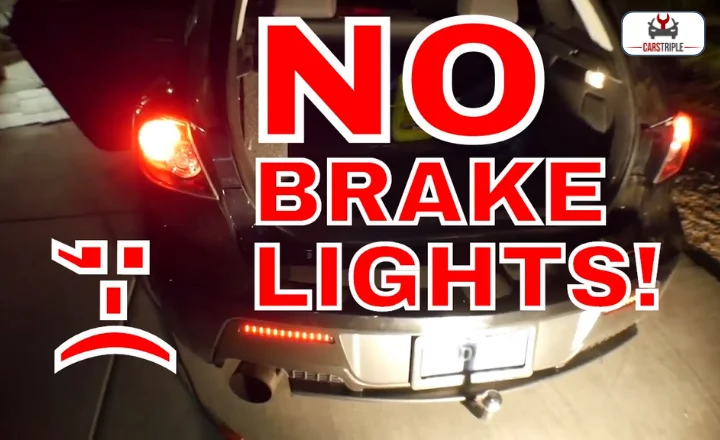
One potential cause to consider is the C1201 trouble code symptoms, which could indicate a problem with the vehicle’s ABS system. While many drivers may jump to conclusions about a simple bulb or fuse replacement, they should be aware that underlying issues related to the ABS module may require professional diagnostics and repair.
It’s important to recognize that an inoperative brake light can have more serious implications than just getting pulled over by law enforcement. It compromises your ability to signal other drivers when slowing down or coming to a stop, potentially resulting in rear-end collisions or other hazardous incidents on the road.
Therefore, addressing the root cause of the malfunction becomes paramount, not only for legal compliance but also for preserving overall road safety.
Causes Of The C1201 Code
The C1201 error can be triggered by various factors, with the brake light switch being the most common culprit. Other potential causes include problems with the traction control system or issues within the car’s electrical system. These factors contribute to the symptoms associated with the C1201 trouble code.
1. Brake Light Switch
The major consequence is that the Vehicle Stability Control (VSC) and Traction Control System (TCS) won’t operate as intended. The brake light switch signals to the body control module (BCM), which then activates the brake lights. If this switch is faulty, it can lead to incorrect signaling to the BCM, causing issues with VSC and TCS functionality.

This malfunction could be a fault in the electrical circuit connected to the brake light switch. If there’s a short or open circuit in this system, it can cause irregularities in signaling to the BCM, leading to errors with VSC and TCS operations. Wear and tear over time can also lead to the degradation of the brake light switch, resulting in unreliable communication with other vehicle systems.
Understanding the underlying causes of the C1201 code associated with brake light switch malfunctions sheds light on why it’s crucial for drivers to promptly address any issues related to this component.
Regular inspections and maintenance checks are essential for ensuring that all electrical circuits are functioning correctly, preventing potential safety hazards associated with faulty braking systems.
2. A Problem With Traction Control System
The C1201 code, which relates to a problem with the traction control system, can be a significant issue for drivers, particularly in challenging weather conditions. The traction control system is designed to prevent your car from sliding around on slick surfaces by reducing wheel spin and maintaining stability.
The potential cause of the C1201 code is a faulty wheel speed sensor. This sensor plays a critical role in providing accurate data to the traction control system, allowing it to make real-time adjustments to keep the vehicle stable.
If the sensor is damaged or malfunctioning, it can send incorrect information to the system, leading to erratic behavior and compromised safety on slippery roads.
Other common culprits behind the C1201 code include issues with the ABS module or wiring harness. These components are essential for the proper functioning of the traction control system, and any malfunction can disrupt its ability to effectively manage wheel spin and maintain grip on slick surfaces.

Here are a few common reasons for the C1201 code, which often indicates Traction Control System component malfunctions.
- The C1201 code can be triggered by the brake light switch
- The traction control system sensor can also cause the C1201 code
- Another potential culprit for the C1201 code is the traction control system controller
- The traction control system switch may also be a factor in causing the C1201 code
The C1201 error code can appear if any of these components fail, indicating potential causes of the C1201 code.
3. Anti Lock Brake System Malfunction
Dealing with an Anti-Lock Brake System (ABS) malfunction, the C1201 code could point to various potential causes. The common culprit is a bad ABS control module, which can disrupt the system’s ability to function properly.
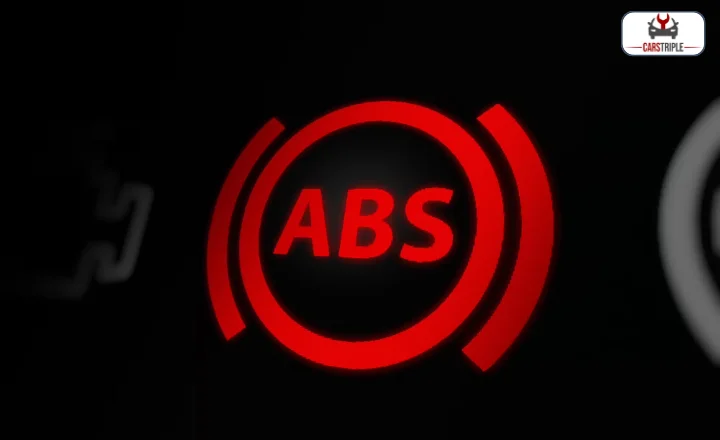
This vital component plays a crucial role in regulating the ABS and ensuring that the wheels do not lock up during braking. A faulty sensor could trigger the C1201 code, leading to inconsistent data transmission between the wheels and the ABS control module.
Another significant factor contributing to an ABS malfunction is low brake fluid levels. Insufficient brake fluid can compromise the overall performance of the braking system, leading to erratic behavior and triggering error codes like C1201. Keeping a close eye on brake fluid levels and addressing any leaks or inadequate levels promptly can help prevent potential ABS malfunctions.
Understanding these various factors that contribute to an ABS malfunction sheds light on why it’s crucial for drivers to stay vigilant about regular maintenance checks and address any warning signs promptly. With these potential causes of the C1201 code, drivers can take proactive steps toward maintaining their vehicle’s safety and preventing unexpected malfunctions while on the road.
4. Wet Wheel Speed Sensor
The wet wheel speed sensor is a crucial component of the ABS system, responsible for detecting the speed of each wheel and relaying this information to the vehicle’s control module. When this sensor becomes wet, it can lead to potential issues within the ABS system.
One common problem that arises from a wet wheel speed sensor is the activation of the C1201 code. This code indicates a communication error between various vehicle control modules and can be triggered by moisture affecting the functioning of the wheel speed sensor.
The causes of the C1201 code are indeed related to moisture infiltrating the wheel speed sensor. When water or other liquids enter the sensor’s housing, it can disrupt its ability to accurately detect wheel speed, leading to communication errors within the ABS system.
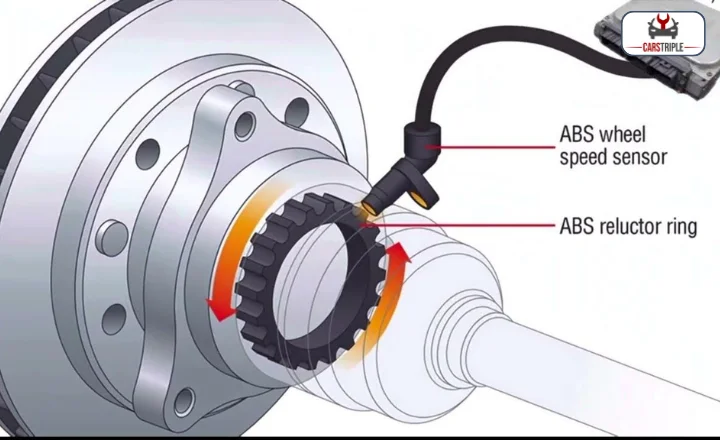
It’s essential for vehicle owners and technicians to be aware of potential sources of moisture that could impact the performance of these sensors in order to prevent triggering this troublesome error code.
Understanding how moisture impacts wheel speed sensors and leads to codes like C1201 highlights an important aspect of vehicle maintenance and troubleshooting. By identifying potential sources of water infiltration and ensuring proper sealing and protection for these sensors, drivers can help prevent unnecessary ABS malfunctions caused by wet conditions.
5. Faulty Oxygen Sensor
The faulty oxygen sensor is like a mole in the automotive world, often overlooked but capable of causing significant damage. With age and contamination being the prime culprits for its malfunction, a poor connection was added to the list as yet another threat to this crucial car component.
The consequences of a broken oxygen sensor are not limited to inefficiency; they can lead to an imbalanced air-fuel ratio that affects the engine’s performance. This imbalance translates directly into increased fuel consumption and harmful emissions, highlighting the urgency of addressing this issue promptly.
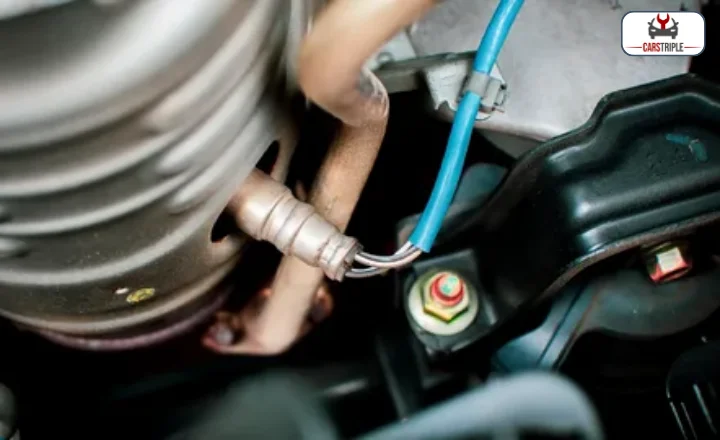
Modern automobiles rely heavily on oxygen sensors to monitor and modify the air-fuel ratio in real time. When an oxygen sensor fails, it triggers error codes such as C1201, signaling potential issues with engine control modules or catalytic converters.
These warning signs should prompt immediate action because neglecting a faulty oxygen sensor puts both the car’s efficiency and environmental impact at risk. The causes of C1201 code activation, drivers can take proactive steps toward maintaining their vehicle’s health and minimizing their carbon footprint.
How Serious Is The C1201 Code?
The C1201 code, indicating a malfunction in the ECM anti-lock braking system, is indeed a serious issue that should not be ignored. When this code appears, it can indicate potential catastrophic damage to the braking system, particularly when you press the brake pedal. This poses a high risk of hazard and compromises the overall safety of your vehicle.
The immediate danger of compromised braking performance is that ignoring or neglecting the C1201 code can lead to costly repairs down the line. The anti-lock braking system is a critical component for maintaining control and stability during emergency braking situations. Any disruption or malfunction in this system can significantly jeopardize your ability to stop safely and efficiently.
Seeking professional diagnostics and repairs from a qualified mechanic is crucial for ensuring road safety and preventing potential further damage to both the ECM and anti-lock braking system. Addressing this issue swiftly not only mitigates immediate risks but also saves you from potentially more severe consequences in the future.
What Repairs Can Fix the C1201 Toyota Code?
When dealing with a C1201 error code in a Toyota, it’s essential to understand that the gas lid might not be the direct cause of the issue. The C1201 code typically indicates a problem with the engine control module, traction control system, or brake system.
While ensuring that the gas cap is properly tightened and secure is important for overall vehicle performance and emissions control, simply changing the gas cap may not resolve the root cause of the C1201 error.
To genuinely address and fix the C1201 Toyota code, diagnostic steps should be taken to identify potential issues within the electronic systems of the vehicle. This often requires specialized equipment and expertise to pinpoint and rectify problems related to sensors, wiring harnesses, or other components that could trigger the error code.
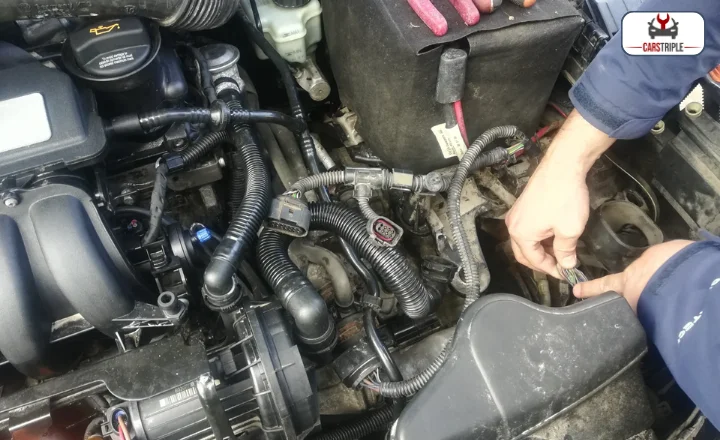
Addressing these underlying issues comprehensively rather than superficially focusing on just one component like the gas cap can enable a more effective and long-term solution for resolving the C1201 error.
The subsequent solutions may be beneficial in addressing this problem:
- Check the brake fluid level and top up if necessary
- Inspect the brake system for any leaks or damage
- Test and replace the Brake Actuator Assembly if malfunctions
- -Reset the trouble codes using an OBD-II scanner
Staying updated with routine maintenance tasks and promptly addressing any warning lights can help prevent such problems in the future. With these potential remedies for the C1201 code, you can save time and money by addressing the issue promptly and effectively.
Remember that regular inspection of your vehicle’s systems is key to maintaining its functionality and safety on the road.
C1201 Toyota Fixing Cost
The cost associated with fixing this issue can often be substantial, leaving individuals hesitant to address it and risking potential long-term damage to their vehicle. What exacerbates the situation is that the C1201 code only displays when there is a malfunction in the engine control system, making it challenging for car owners to pinpoint the exact problem.
Mechanics are often required to spend more time diagnosing and troubleshooting before they can even begin implementing a fix. When faced with a C1201 error code, some mechanics may opt to simply reset the code without fully addressing its underlying cause.
This temporary solution allows them to clear an immediate warning signal for the driver but does not truly resolve the issue at hand. Drivers may find themselves stuck in a recurring cycle of dealing with this error code every so often, creating ongoing annoyance and potential safety concerns while driving.
It’s imperative for both mechanics and drivers alike to recognize that simply resetting the code is akin to putting a band-aid on a much larger problem within the vehicle’s control system.
Conclusion
Understanding the C1201 code Toyota vehicles is crucial for ensuring proper maintenance and performance. By diagnosing the specific issue causing the code to appear, owners can take targeted steps to resolve it. Whether it’s addressing a faulty ABS system, sensor malfunction, or wiring problem, getting to the root of the issue is key.
With the right tools and expertise, many individuals can successfully fix the C1201 code themselves, saving time and money. If unsure or unable to address the problem independently, seeking professional assistance is always advisable. Take action today to tackle the C1201 code and keep your Toyota running smoothly for years to come.
FAQS
What does the C1201 code mean in a Toyota?
The C1201 code in a Toyota indicates a problem with the engine control module.
What are the common symptoms associated with the C1201 code?
Common symptoms include an illuminated check engine light, reduced engine performance, and stalling.
How do I diagnose the C1201 code in my Toyota?
Diagnosing the C1201 code typically involves using a scan tool to retrieve specific fault codes and performing a thorough inspection of related components.
Can I fix the C1201 code on my own?
Fixing the C1201 code may require advanced technical knowledge and specialized tools, so it’s recommended to seek professional help.

